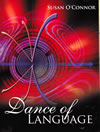Viewing: An Important Part of Visual Learning
 Similar to the language arts skill of listening is viewing, or observing. Because of advertising and advanced technology,
viewing has become a method of communicating that combines words and visual stimuli. This form of language often dominates our lives
and must be taken seriously as a form of language arts that requires studying in order to respond effectively to it.
Because films and documentaries abound in every classroom now, students’ listening and thinking skills must be alert and ready
to receive the language offered in this medium. Aside from technology, student writers will discover that it is through observing people,
places, and situations that the material necessary for both fiction and nonfiction is often gathered. The poet observes nature,
the reporter the situation of conflict or interest or merely the latest news,
the essayist the experiences that foster an opinion, the novelist the actions that result from characters’ wants and needs.
Similar to the language arts skill of listening is viewing, or observing. Because of advertising and advanced technology,
viewing has become a method of communicating that combines words and visual stimuli. This form of language often dominates our lives
and must be taken seriously as a form of language arts that requires studying in order to respond effectively to it.
Because films and documentaries abound in every classroom now, students’ listening and thinking skills must be alert and ready
to receive the language offered in this medium. Aside from technology, student writers will discover that it is through observing people,
places, and situations that the material necessary for both fiction and nonfiction is often gathered. The poet observes nature,
the reporter the situation of conflict or interest or merely the latest news,
the essayist the experiences that foster an opinion, the novelist the actions that result from characters’ wants and needs.
Visual learners often gain information more effectively by viewing information graphically. Whether in the form of charts, drawings and illustrations, films, or demonstrations, learning in this format appeals to all students because for some it isn’t just reinforcement of aural learning; visual learners’ brains may need pictures, diagrams, graphics that help them see the information they need to learn.
One of the most widely-used categories of the various types of learning is Fleming’s VAK model. Fleming claimed that visual learners have a preference for viewing material to be learned. According to neuroscientist and professor of synaptic pharmacology at the University of Oxford and former director of UK’s Royal Institution, Susan Greenfield, “Humans have evolved to build a picture of the world through our senses working in unison, exploiting the immense interconnectivity that exists in the brain.” Although much of the research on learning styles has not been validated through independent research, the fact remains that we live in a world where students, bombarded with visuals, have come to expect to see what they are learning. Visuals, especially film, therefore, have a twofold advantage: They feel like entertainment while imparting necessary information at the same time.
Uses of Visuals to Enhance Learning
Other than providing background information and reliving historical moments, films covering all subject areas offer a wide variety of specific sources of information. One of my favorite activities for my fiction writing workshop is showing film clips to illustrate the way writers incorporate tension in their stories. Students develop expertise at identifying specific actions and even facial expressions and body language in film and then applying them to their own writing.
If you want to see an example of a particular motif without reading the novel, a film is an excellent supplement. Seeing, to be sure, is no substitute for reading, but it does offer an interesting addition to the curriculum, especially if students need help recognizing symbolism, which is visual in the first place. Often screenplays of novels have garnered their own coveted prizes such as the Pulitzer.
A number of documentaries play a role in my classroom. Students enjoy watching the experts talk about background information on everything from the Depression era to Shakespeare as it is taught in both the United States and Great Britain. Another point of view apart from their teacher provides welcomed perspectives.
Do not underestimate the value of art work in an English classroom. Many students prefer to respond to a piece of literature through their artistic talents rather than writing. Not at the exclusion of mastering writing skills, the use of art in the classroom can be motivating for students who learn better visually. When my students study symbolism, they learn that the tree is often an integral part of a story. One activity asks them to research the tree as a symbol in world mythology and create a 4x6 ornament (no Christmas trees allowed) to be hung year round on a large tree in my classroom. On the back of the tree students write information about the history and brief literary use of that symbol. The central tree spilling over with different mythological trees is a constant reminder of the power yielded by that symbol in art and literature.
 Digital technology makes learning visually accessible through Smart Boards, Notebooks, iPads, interactive white boards, and document cameras.
Although I do not believe “Paper is out,” as many techies would have you believe, the interactive nature of new technology with
traditional teaching affords a superb balance for students. For an interesting discussion about the possible neurological effects of technology on children,
see Susan Greenfield’s article: http://www.dailymail.co.uk/sciencetech/article-565207/Modern-technology-changing-way-brains-work-says-neuroscientist.html.
Digital technology makes learning visually accessible through Smart Boards, Notebooks, iPads, interactive white boards, and document cameras.
Although I do not believe “Paper is out,” as many techies would have you believe, the interactive nature of new technology with
traditional teaching affords a superb balance for students. For an interesting discussion about the possible neurological effects of technology on children,
see Susan Greenfield’s article: http://www.dailymail.co.uk/sciencetech/article-565207/Modern-technology-changing-way-brains-work-says-neuroscientist.html.
